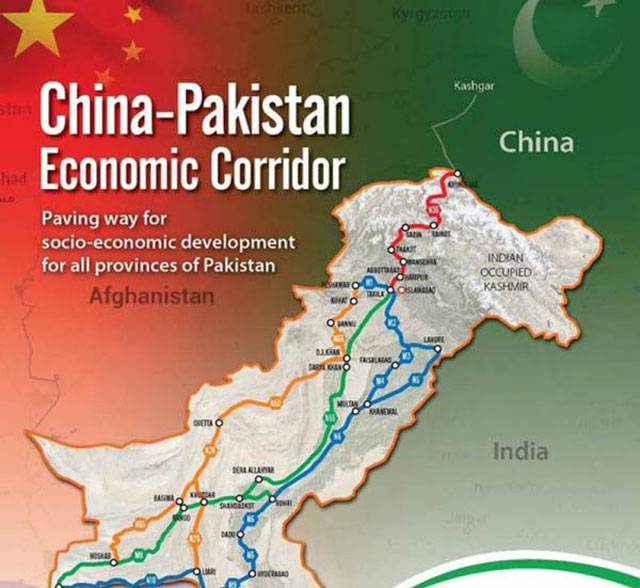Islamabad - Pakistan and China have agreed to strengthen financial regulations, under the China-Pakistan Economic Corridor’s (CPEC) Long-Term Plan (LTP), and promote the use of Yuan and Rupee in the settlement instead of third party currencies, it was learnt reliably here on Sunday.
Under the LTP, signed by China and Pakistan, the key areas of cooperation, till 2030, include Financial Regulations, Connectivity, Energy, Trade and Industrial Parks, Agricultural Development and Poverty Alleviation, Tourism, official sources told The Nation.
The federal government is all set to officially launch the Long-Term Plan (LTP) of the China Pakistan Economic Corridor (CPEC) today (Monday).
CPEC projects are broadly divided into three phases, starting from the Short-Term Plan which is effective till 2020; Medium Term Plan will cover the projects till 2025 and Long-Term Plan which is valid until 2030.
LTP was signed last month at the meeting of 7th JCC and it was agreed to be reviewed after every two years by both sides, said the sources.
As per the short-term plan, by 2020 CPEC will address major bottlenecks to Pakistan’s economic and social development and will boost the economic growth.
Under the Medium Term plan, the industrial system will approximately complete by 2025, which in turn will significantly improve lives of the people living along the corridor.
The LTP is valid till 2030, and it is predicted that the CPEC building plan is to be entirely accomplished.
Under the financial regulation agreed under the Long Term Plan (LTP), it was agreed to use Chinese Yuan in cross border trade and project financing, sources said. It was also agreed to support multi-currency direct financing of Pakistan’s central and local government, the source said.
For ensuring better connectivity, it was agreed to put in place an integrated transport system which includes construction and development of road infrastructure from Kashgar to Gawadar and Karachi via Islamabad, Peshawar, DI Khan, Quetta and Sohrab. The upgradation and expansion of existing Railway line, development of Gwadar port is also part of the LTP connectivity plan.
With respect to information network infrastructure, it was agreed to boost information connectivity and promote pragmatic cooperation through the operation of local communication, broad and TV networks, cross border optical fiber.
In the energy sector, it was agreed to boost cooperation in the generation and transmission of electricity, oil and gas. The possibility of construction of refineries and storage alongside CPEC is also part of the LTP. For hydropower development, it was agreed to promote river planning and preparatory work of major projects to accelerate the hydropower development process.
Development of Coal, Wind and Solar-based energy generation is also included in LTP. It was agreed to develop the industry for manufacturing the energy sector equipments in Pakistan.
The development of Trade and Industrial Park is also approved as part of the LTP which includes, industrial cooperation which will enable Pakistan to assemble imported parts locally.
LTP will also help Pakistan enhance its industrial capacity and cooperation in sectors such as chemical, pharmaceuticals, engineering, agro, iron steel and construction. The development of Special Economic Zones (SEZs) is also part of this cooperation.
Regarding development of the agriculture sector and poverty alleviation, it was agreed that both the countries should cooperate in key construction areas such as biological breeding, production, processing, storage and transportation, infrastructure construction, disease prevention and control, water resources utilization, conservation and protection, land development and remediation, ICT-enabled agriculture and marketing of agricultural products to promote the systematic, large-scale, standardized and intensified construction of the agricultural industry.
In the tourism sector, it was agreed that China and Pakistan should further develop the prospects for tourism in this region, including for coastal tourism.






